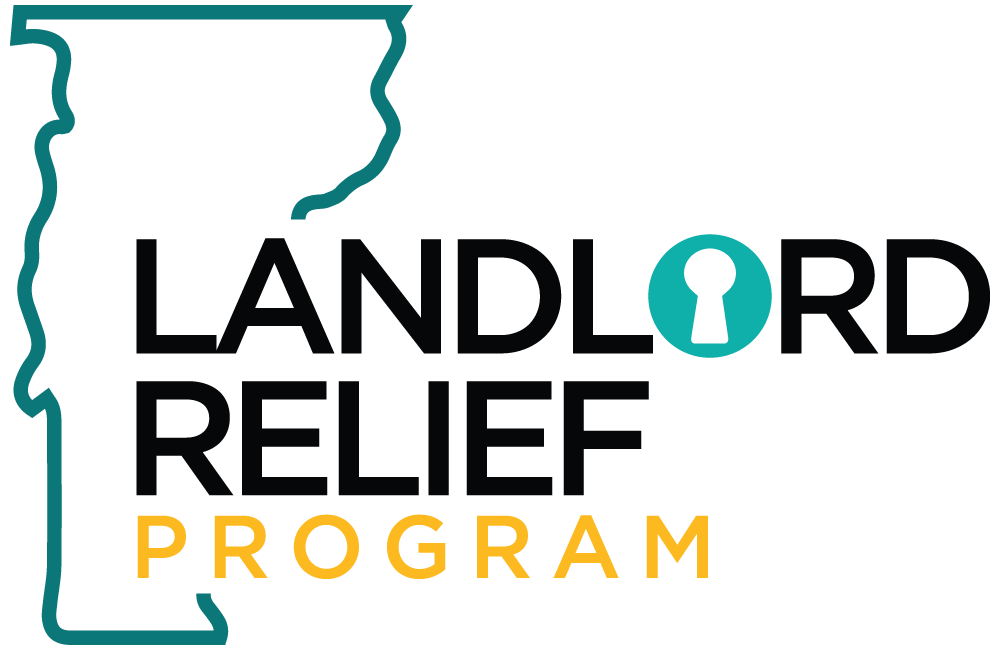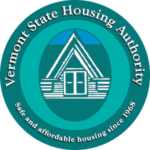Vermont State Housing Authority
Landlord Relief Program
The Landlord Relief Program provides an incentive and added security to landlords statewide who house Vermonters receiving rental assistance or who are homeless.
Sign up for our Monthly Newsletter
To receive updates and other information
Submit Application
Upload W9/Direct Deposit
Additional Forms and Help
Please Note
Landlords who received VERAP payments directly had their information transferred into this portal. Please use the same login credentials. New users will need to register here.

– Program Goals
Landlord Relief Program
- Open doors for landlords and tenants to establish successful and trusting relationships that result in successful tenancies and housing stability..
- Increase the inventory of rental units available to Vermonters who are experiencing or at risk of experiencing homelessness; and
- Provide resources to prevent loss of housing opportunities for tenants and prevent vacancies for landlords.
– Program Details
Landlord Relief Program
The goal of the Landlord Relief Program is to increase rental opportunities to people who may not otherwise be able to access housing due to rental barriers. The program offers up to $5,000 for:
- Prorated cost to hold the unit for a future program-eligible tenants, limited to two months’ rent
- Prorated cost for loss of rent from a vacancy due to repairs needed (that exceed normal wear and tear), limited to one month of rent
- Qualifying damages caused by a tenant
- Rent associated with early termination of the lease by the tenant, limited to one month of rent

Who Can Apply
Landlords or Property Managers
If you were registered with VERAP – Please use that login as your username and password were transferred. NEW TO US: please login with email; password and upload your W9 AND DIRECT DEPOSIT INFORMATION.
Paper applications will be made available for the following reasons: to accommodate disability, or lack of access to the necessary technology.
Program Requirements:
- Rent amount must be affordable to households at 80% Area Median Income (AMI): here.
- Tenant households must be recipients of a rental subsidy or payment assistance within the past five (5) years.
- Tenant/households who were homeless at the time of their initial move-in.
- Landlords must demonstrate regular inspections have been performed on the property and unit, and inspections will continue to occur if awarded funds;
- For further details please click here: Admin Plan

– Examples of Claims
Landlord Relief Program
ABC Property Management has a vacant one-bedroom apartment that is move-in ready and available for $875 per month. On June 6th, Jim applies for the apartment. On June 8th, Jim is approved to live in the apartment. ABC Management and Jim agree to a move-in date of June 15th.
Jim’s move-in expenses (including a $500 Security Deposit) and first three months of rent are being paid by a non-profit organization in the form of a rental subsidy. Prior to agreeing to pay ABC Management, the non-profit agency requires the apartment to pass a move-in inspection. The inspection is scheduled for June 12th. The apartment fails inspection and requires minor repairs prior to Jim taking possession of the apartment. The repairs, totaling $1250, are scheduled for June 18th and completed June 19th. The apartment passes the follow up inspection and Jim and his dog move into the apartment on June 20th.
In this example: ABC Management may submit a claim for the following amount of reimbursement:
- $750 for repair costs (Landlords pay the initial $500)
- $143.84 in lost rent – ($875 x 12 months)/365 days x 5 days
ABC Management will need to provide the following:
- Jim’s Executed Rental Agreement
- Jim’s Executed Move-In Condition Report
- The Non-Profit Agency’s failing inspection report or copy of a conditional certificate of occupancy
- Photos: before and after repairs of the affected area
- Invoices for the repairs made
- ABC Management’s completed claim submission application
Two years into the tenancy Jim submits a repair request to the property manager for a clogged toilet. Snaking the toilet does not clear the clog. The maintenance supervisor breaks the toilet open and finds several cotton swabs were clogging the toilet. ABC Management must replace the toilet and has a combined expense between the failed snake attempt and toilet replacement of $980.
In this scenario, ABC Management may submit a claim for the following amount for reimbursement:
- $980 for repair attempt and replacement of the toilet.
- Reasonable expenses for the time and the materials completed by the maintenance supervisor.
ABC Management will need to provide the following:
- Jim’s Executed Rental Agreement
- Jim’s Executed Move-In Condition Report
- Evidence of rental subsidy
- Photos: before and after repairs of the affected area
- Invoices for repairs made
- ABC Management’s completed claim submission application.
Five years into the tenancy, Jim ends his tenancy and moves out of the apartment. Below are different possible outcomes and the likely results of each:
- Jim moves out leaving no damage, only minor cleaning and light paint touch up required but fails to pay the last 20-days of rent.
- The landlord must use the security deposit to mitigate any costs associated with it first
- In this scenario, we will say that cleaning and touch-up cost $500
- The amount of rent owed is $575.34.
The landlord can submit a claim for this amount and will only need to provide the following for a rent-only claim:
- Jim’s Executed Rental Agreement
- Jim’s Executed Move-In Condition Report
- Evidence of subsidy
- A copy of the tenant ledger showing the deficiency
- ABC Management’s completed claim submission application
Jim moves out leaving no balance due for rent, but the unit is very dirty, and the carpet is heavily stained by the dog.
- Carpet replacement totaled $2560 ($1800 for carpet, $260 for new pad, $200 for materials to seal the subfloors and $300 for labor).
- The landlord must first use the security deposit to mitigate any associated costs
In this scenario, the landlord can submit the following for the claim:
- Carpet cost $1800.00
- Pad, labor, and materials $760.00
- Total amount of cleaning and repairs is $2565.00 (subtracting the deposit) Claim: $2,056.00
The following will be required for this claim:
- Jim’s Executed Rental Agreement
- Jim’s Executed Move -In Condition Report
- Evidence of subsidy
- Photos – before and after repairs of the affected area,
- Invoices for repairs made
- ABC Management’s completed claim submission application.
– Frequently Asked Questions
Landlord Relief Program
Who is eligible to apply?
- Landlords/Property Managers may be either for-profit or non-profit owners of rental housing.
- Any landlord that has a lease or a completed and executed Rental Assistance Agreement (if a section 8 program you will have a HAP contract or Rental Assistance Agreement).
How do I know if my unit is eligible?
- The unit must be a residential rental in the State of Vermont.
The gross rent (rent plus all utilities) must meet affordability standards for an individual/family at 80% of AMI. To see eligibility table click here. - Landlords must demonstrate regular inspections have been performed on the property and unit, and inspections will continue to occur after the claim is processed.
- Properties owned by a housing authority are not eligible.
- Properties owned by non-profit housing agencies with project-based subsidies or tax credits attached are not eligible.
Who isn’t eligible to apply?
- Tenants aren’t eligible to apply for repairs or relief under this program. Tenants seeking support may call 211 to learn about potential options.
Are back rent/utilities an eligible expense?
- No, this program isn’t like the VERAP Program. We cannot cover rental or utility arrears.
- Other resources may be available for eligible tenants, and they can call 211 for a list of these potential resources. Tenants can also contact their local Housing Lead Agencies at Vermont Lead Agencies – Vermont Coalition to End Homelessness (helpingtohousevt.org). Eligibility for some assistance is based on whether a household meets the AHS definition of at risk of homelessness.
Is this program only for landlords that serve low-income household?
- Eligibility is based on the tenant receiving a subsidy or some form of rental assistance or homeless prior to moving in. There is NOT an income eligibility test for this program, and we will not be requesting income documentation.
What rental subsidy or payment assistance programs are eligible?
- Any form of rental subsidy or payment assistance for rent is eligible. These include but are not limited to the following:
- Housing Choice Vouchers/Section 8
- State Rental Assistance
- Local non-profit, faith-based initiative OR any local community agency giving financial assistance to secure or maintain tenancy.
- Vermont Emergency Rental Assistance Program (VERAP)
What if I didn’t get a copy of the Housing Voucher or Housing Assistance Payment Form?
- The easiest solution to satisfy this requirement is to contact the Program that provided you with the subsidy and ask them to supply a formal letter with the details describing the amount and duration of the assistance.
- If a landlord is not able to provide copies from the Housing Assistance Program, a signed statement from the tenant or case manager stating the amount and length of the rental subsidy or payment assistance will suffice.
What is a Housing Assistance Inspection Report?
- A Housing Assistance Inspection Report is the form that is completed to verify that the property is habitable and meets the minimum standards of the Housing Assistance programs that is offering rental subsidy. (Agencies providing subsidies use these). PDF (hud.gov)
What is a Move-In Condition Report?
- A Housing Assistance Inspection Report (subsidizing agencies use these) or move-in condition report is required prior to approval of funds.
- A Move-In Condition Report is a form that is completed by the tenant and landlord to document the condition of the property at the time of move-in.
- This same form can used again to document the condition of the property at moveout for ease of comparison.
- If you don’t have a housing assistance inspection report or a move-in condition report, you must use the move-in condition report supplied by VSHA for this program.
When can I submit a claim?
- A claim must be submitted within 45 days of the landlord incurring an eligible expense, discovering the claim, or an inspection of the unit.
How much can be reimbursed for a pre move-in claim?
- The initial $500 of the repairs will not be reimbursed. Any amount above the initial $500 (and not exceeding program caps) will be reimbursed if the claim is approved.
- The landlords may claim up to 2 months of vacancy loss (rent loss) that caused the move-in to be delayed by the needed inspection and/or repairs. Evidence of the delay must be submitted with the claim.
How much can be reimbursed after move-in?
- Landlords can receive up to $5,000 in repair reimbursement per tenancy. The minimum claim is $500.00. Unlike the pre-move in, the initial $500 is reimbursable.
Important note: Any monies paid on a post move-in claim will nullify the landlord’s ability to pursue any other funds owed from the tenant through any means or agency for the funded claim.
What other expenses can a landlord claim?
- Legal or mediation fees associated with eviction of the eligible tenant.
Are there minimum and maximum amounts for a claim?
- Each individual claim must be a minimum of $500.00
- Multiple claims can be submitted but a maximum of all awarded combined claims cannot exceed $5,000 per tenancy OR $10,000 per unit.
How do I use the Security Deposit?
- Any claim that is submitted for move-out charges must first have the security deposit applied to the charges owed.
How long does the review process take?
- The LRP cannot guarantee a specific timeline, only that each application will be reviewed in the order it was received.
- Once received, the administrator will review the information and materials submitted with the claim application within 10 business days.
- The claimant will be notified of a decision in writing. The decision may include a request for additional information/documentation.
PLEASE NOTE: Incomplete applications and lack of supporting documentation could result in delays.
What if my claim is denied?
- If an applicant is determined to be ineligible for assistance, VSHA will notify the applicant in writing with a detailed reason for the denial, including any facts relied on for the decision.
- The claimant must notify VSHA, in writing or by phone, of their intent to appeal the decision within 10 business days from the date of the denial.
Are expenses related to hoarding eligible?
Under certain circumstances hoarding may lead to situations considered qualifying damages. It must meet the threshold of excessive damages caused by eligible tenants or repairs needed to meet Housing Quality Standards for future eligible tenants. This program does not cover ongoing issues of maintenance or cleaning.

